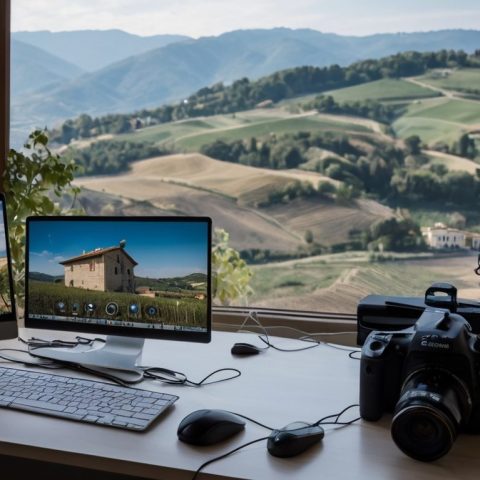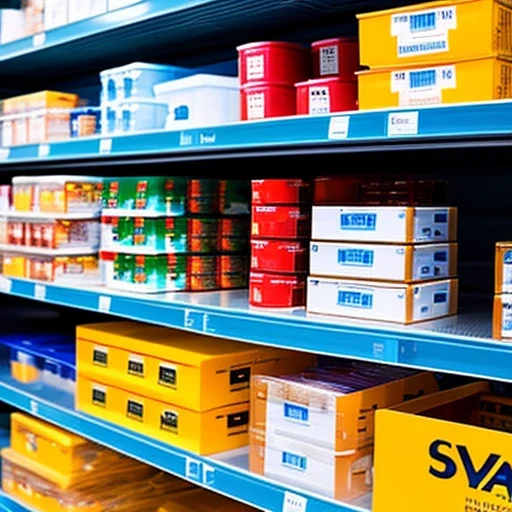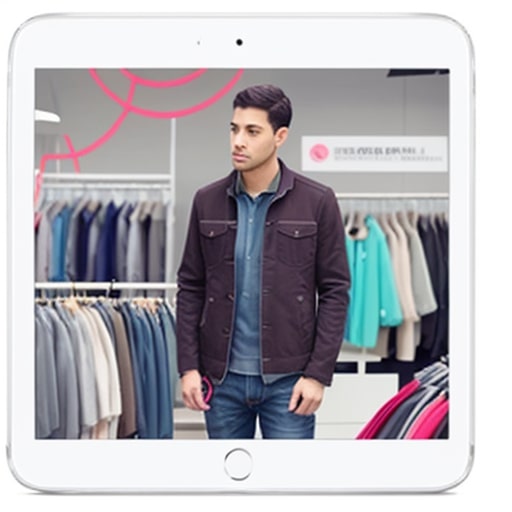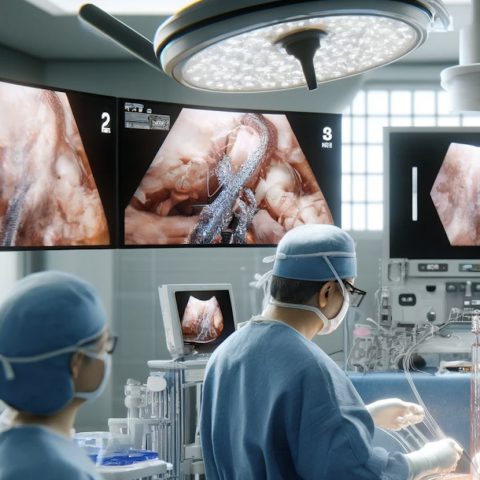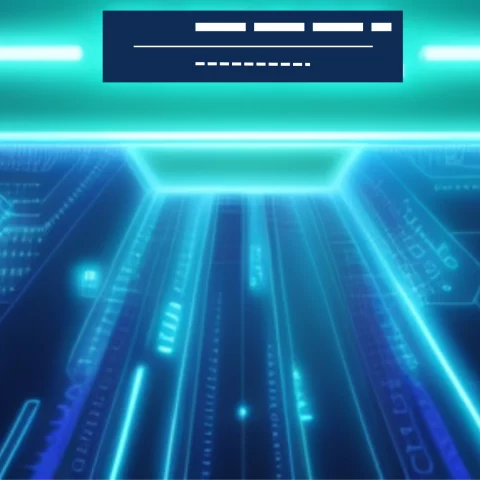AI Photo Generators Are Shaking Up Traditional Photography
Jun 6, 2024
In my household, photography has always been about capturing the moment. But what if we could create moments that never happened? What if the boundaries of creativity were pushed so far that the line between reality and imagination blurred? This is the promise of artificial intelligence (AI) photo generators, a technology that’s not just revolutionizing photography but redefining creativity itself.
The Dawn of a New Era in Photography
Imagine being able to generate a stunning landscape that doesn’t exist anywhere on Earth or creating a portrait that combines the features of multiple individuals into one seamless image. AI photo generators make this possible. These tools use sophisticated algorithms to analyze and recreate visual elements, producing images that can be strikingly realistic or fantastically surreal.
I remember the first time I used an AI photo generator. The ease with which I could create intricate, detailed images was astonishing. You simply input your ideas, and the AI does the rest, rendering photos that can be both beautiful and thought-provoking. It’s like having a professional photographer and a digital artist at your fingertips.
How AI Photo Generators Work
At their core, AI photo generators use deep learning models, particularly Generative Adversarial Networks (GANs). GANs consist of two neural networks, the generator and the discriminator, working in tandem. The generator creates images while the discriminator evaluates them, guiding the generator to produce increasingly realistic photos over time.
The generator starts by producing random images based on input parameters. These initial attempts are usually rough and need coherence. The discriminator then evaluates these images, comparing them against real photos from a training dataset. It provides feedback on how realistic or unrealistic the generated images are. This feedback loop is critical – it’s what drives the generator to improve.
For instance, let’s look at creating an image of a sunset over a futuristic cityscape. You begin by providing a detailed description or “prompt” to the AI, which could go something like this:
The colours of the sunset.
The style of the futuristic buildings.
The presence of flying vehicles.
Are there any other specific elements you envision?
The generator takes this input and creates a preliminary image, which might be far from perfect initially.
The discriminator then steps in, analyzing the generated image for authenticity and comparing it with authentic images of sunsets and cityscapes it has learned from. It identifies flaws and areas for improvement, such as unnatural lighting or unrealistic building structures. This critique is then fed back to the generator.
Armed with this feedback, the generator refines its next attempt, producing a new iteration that better captures the desired elements. This cycle of creation and evaluation repeats hundreds or even thousands of times. With each iteration, the generator’s output becomes increasingly sophisticated and closer to the vision you described.
In technical terms, this iterative process leverages a loss function – a mathematical measure of how far the generated images are from real ones. The generator aims to minimize this loss, fine-tuning its parameters to produce images that the discriminator finds more convincing. Over time, the generator learns the intricate patterns and nuances that make an image appear realistic, whether it’s the subtle gradient of a sunset sky or the intricate details of a futuristic cityscape.
What’s fascinating about GANs is their ability to learn and generalize from the training data. They don’t just memorize specific images but rather understand the underlying principles that make those images realistic. This capability allows AI photo generators to create entirely new images that are indistinguishable from real photos, opening up a world of creative possibilities.
This technology isn’t just limited to static images. Advances in GANs are also being applied to generate realistic video sequences, animate still photos, and even create interactive 3D environments. The potential applications are vast, spanning from entertainment and gaming to virtual reality and beyond.
AI photo generators powered by GANs represent a significant leap in how we create and interact with visual content. They transform our inputs into highly realistic images through a sophisticated process of trial, feedback, and refinement, ensuring that the final output is a true reflection of our creative vision.
Expanding Creative Horizons
For photographers and digital artists, AI photo generators are game-changers. They offer a playground for creativity, where the only limit is your imagination. You can experiment with different styles, themes, and compositions without the constraints of physical reality.
Consider a wedding photographer who can now offer clients, not just photos of their special day but artistic interpretations that blend reality with fantasy. Or a graphic designer who can create unique marketing materials that stand out in a crowded digital landscape. These tools empower professionals to push the envelope, exploring new aesthetic territories that were previously out of reach.
Real-World Applications and Case Studies
One notable case for real-world photo or image generator applications is the fashion industry, where AI-generated images are used to design virtual clothing lines. Companies can create entire catalogues of outfits without manufacturing a single piece, allowing for rapid prototyping and market testing. This approach enables fashion brands to experiment with an extensive range of designs, fabrics, and styles in a digital space, dramatically reducing the time and cost associated with traditional garment production. For example, AI can generate thousands of unique clothing designs based on current fashion trends and consumer preferences, which can be tested in virtual environments to gauge customer interest and feedback.
This not only helps in identifying potential best-sellers before any physical production but also minimizes the environmental impact by reducing waste and conserving resources. Major fashion houses like Balenciaga and Tommy Hilfiger have started incorporating AI-driven design tools to stay ahead in the competitive market and to create more personalized and innovative collections.
Another compelling example is that of advertising. Coca-Cola recently used AI to generate images for a marketing campaign. By inputting various keywords and concepts, the AI created visuals that resonated deeply with their target audience, leading to higher engagement rates and a significant boost in brand perception. This AI-driven approach allows brands to create highly personalized and dynamic content that can adapt to different demographic segments and market conditions. AI can analyze vast amounts of consumer data to generate visuals that are more likely to capture the audience’s attention and drive engagement. For Coca-Cola, this meant producing vibrant and emotionally appealing images aligned with their brand message and consumer expectations, resulting in a more effective and memorable campaign. This method also offers the flexibility to quickly iterate and refine visual content based on real-time feedback and performance metrics, ensuring that marketing efforts remain relevant and impactful.
Beyond fashion and advertising, AI-generated imagery is making significant strides in other industries as well. In the entertainment industry, for instance, AI is being used to create realistic and immersive environments for movies and video games. Studios like Pixar and game developers such as Ubisoft are utilizing AI to generate detailed landscapes, characters, and special effects, enhancing their projects’ visual quality and storytelling capabilities. This not only reduces the workload on human artists but also allows for the exploration of creative possibilities that were previously unattainable.
In healthcare, AI-generated images are being leveraged for medical training and diagnostic purposes. AI can produce highly accurate and detailed anatomical models, which serve as invaluable tools for medical students and professionals in training. These models can simulate various medical conditions and surgical procedures, providing a risk-free environment for learning and practice. Moreover, AI-generated images are aiding in the early detection and diagnosis of diseases by analyzing medical imaging data with a level of precision and speed that surpasses traditional methods.
These examples underscore the transformative potential of AI-generated images across a wide range of applications. From enhancing creativity and efficiency in the fashion and advertising industries to revolutionizing training and diagnostics in healthcare, AI is reshaping how we create, interact with, and perceive visual content. By harnessing the power of AI, industries can innovate faster, tailor their offerings to specific audience needs, and ultimately deliver more compelling and effective experiences.
Overcoming Challenges
While the potential is vast, it’s important to acknowledge the challenges. One major concern is the ethical implications of creating images that can be indistinguishable from reality. There’s a risk of misuse in spreading misinformation or creating deceptive content.
To address these issues, developers and users of AI photo generators must adhere to strict ethical guidelines. Transparency is key – clearly, labelling AI-generated images helps maintain trust and integrity. Additionally, ongoing dialogue about the ethical use of this technology is crucial as it continues to evolve.
The Future of Photography
So, what does the future hold for photography in the age of AI? We’re looking at a future where collaboration between humans and machines leads to unprecedented levels of creativity. AI can handle the technical aspects, freeing you to focus on the artistic vision. It’s a partnership that promises to elevate the quality and diversity of visual content across industries.
At this very moment, everyone, regardless of their technical skills, can create professional-quality images, and they are doing so. This democratization of photography opens up new opportunities for storytelling and self-expression, making it possible for more voices to be heard and seen.
Artificial intelligence photo or image generators are more than just a technological novelty; they are a revolutionary tool that expands the horizons of what’s possible in photography and digital art. Blending advanced algorithms with human creativity enables us to create images that were once the stuff of dreams.
Whether you’re a professional photographer looking to push your creative limits or an enthusiast eager to explore new possibilities, AI photo generators offer a powerful and exciting way to enhance your work. As we continue to explore and refine this technology, the only certainty is that the future of photography will be more imaginative and dynamic than ever before.
Ultimately, it’s about what you can create when the boundaries of the real world no longer confine you. So why not give it a try? If you’re interested in unlocking the full potential of your computer vision AI project, be sure to check out our precise Photo Data Labeling Services, or feel free to request a free project estimate for photo data labelling by visiting our project estimate page and providing your project details. Our team will promptly contact you to discuss your requirements and provide a tailored cost estimate for your photo data labelling project.
Recent articles
Generative AI summit 2024
Generative AI summit 2024
Client Case Study: Automated Accounting for Intelligent Processing
Client Case Study: Automated Accounting for Intelligent Processing
Client Case Study: AI Logistics Control
Client Case Study: AI Logistics Control
Client Case Study: Inquiry Filter for a CRM Platform
Client Case Study: Inquiry Filter for a CRM Platform
Client Case Study: Product Classification
Client Case Study: Product Classification
Client Case Study: Interius Farms Revolutionizing Vertical Farming with AI and Robotics
Client Case Study: Interius Farms Revolutionizing Vertical Farming with AI and Robotics
Client Case Study: Virtual Apparels Try-On
Client Case Study: Virtual Apparels Try-On
Client Case Study: SURGAR Delivering Augmented Reality for Laparoscopic Surgery
Client Case Study: SURGAR Delivering Augmented Reality for Laparoscopic Surgery
Client Case Study: Drone Intelligent Management
Client Case Study: Drone Intelligent Management
Client Case Study: Query-item matching for database management
Client Case Study: Query-item matching for database management

